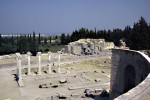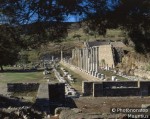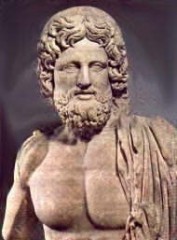In the preceding pages I showed you how current dreams had come to answer Irina’s recent questions. Incubating a dream still works nowadays as it did in the old times.
I will illustrate this by going back in time and talking about dreams and dream incubation in ancient societies all through Antiquity.
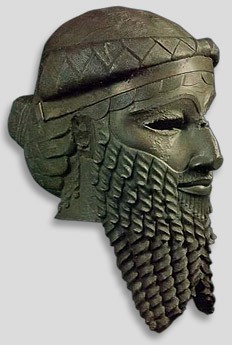
In Asia Minor and throughout the Mediterranean region
We find the same situation. The study and interpretation of dreams go back as far as the early archeological remains bear witness to it. 7000 to 8000 years ago the inhabitants of Mesopotamia interpreted their dreams. The picture here shows the Sumerian cuneiform tablet where is written the Epopy of Gilgamesh, with the dream of the Deluge. 1000 years later this dream inspired the story of Noah’s Ark in the Bible.
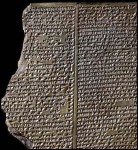 The Sumerians, the Egyptians, the Greeks, the Romans and the Hebrews maintained this way of living in contact with their dreams, as attested to by numerous passages of the Bible.
The Sumerians, the Egyptians, the Greeks, the Romans and the Hebrews maintained this way of living in contact with their dreams, as attested to by numerous passages of the Bible.
1700 years B.C. Pharaoh called upon a Jew, Joseph, to interpret his dreams and thereby he averted a famine in Egypt. ( Genesis, Ch. 41)
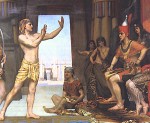
One thousand years later the king of Mesopotamia, Nabuchodonosor II,( 630-562 B C) asked another Jew, Daniel to tell him the meaning of his dreams. Daniel interpreted the dream and explained to the king that his megalomania would result in a psychotic episode in his life.

However, after several years of madness, he would come out of it with humility, recovering his power and glory. And that’s what happened. ( Daniel, Ch. 4)
In the Greco-Roman world
There existed a very famous dream interpreter. He is better known as the father of Western medicine. His name is Hippocrates who lived 600 years B.C. He came from a family of dream interpreters dedicated to the god Aesklelpios, the god of dreams and healing ; they bore the responsibility of three functions, that of priest, doctor and dream interpreter, as the three were considered inseparable.
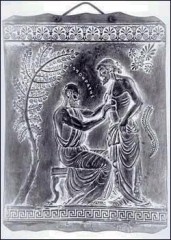
The temples/hospitals where people came for treatment were numerous. In Antiquity there were 420 of them. The sanctuary of Kos, where Hippocrates officiated, was very famous, such as the one of Pergame, where 800 years later, at the beginning of the Christian era around year 250, pilgrims still flocked from the whole Mediterranean region.
Incubation and dreams
Praying Aesklepios in Greek, or Aesculapius in Latin, god of dreams and healing.
The pilgrims prepared to dream on a specifically chosen night. They received a very modern, natural and holistic treatment, prescribed by the priest/doctor : they followed a special diet, took baths, received massages and prayed. Then the priests and the pilgrims met in the temple in a sacred place called Aesclepeion, dedicated to Asklepios.
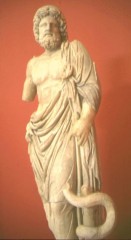
They slept there one or several nights, and the priests collected their dreams the next morning.
What dreamers dreamt and experienced during these nights has been reported. It was very well known that the god intervened in different manners : either he healed immediately, either he manifested his presence in dreams with the image of a snake or a dog.
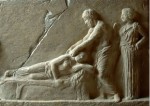
Western medicine has taken up the symbol of the snake but has forgotten its meaning.
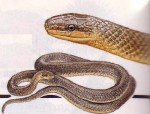
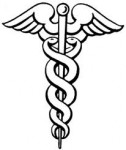 In the dream the god also explained the treatment to be followed in order to heal.
In the dream the god also explained the treatment to be followed in order to heal.
On site, many ex-votos thank Aesklepios for the healing.
You can see here an ex-voto with a hand, showing a kind of abscess , which was cured after the night spent in the Aesclepeion.
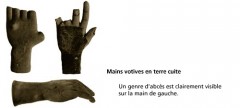
Today, I have spoken about dreams and incubation in Antiquity among Sumerians, Jews, Egyptians, Assyrians, Greeks and Romans. Next time we will see a especialy fascinating dream from Antiquity at the time of Christ.
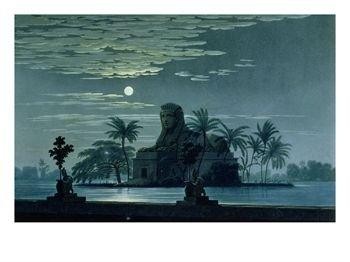
Illustrations
I thank the artists and photographers, whose works permit me to illustrate my blog.
Joseph interpreting Pharaoh’s dream
Nabuchodonosor who became mad, by Blake
Hippocrates with a patient
Aesclepeion in the sanctuary of the Kos Island in Greece
Aesclepeion in the sanctuary of Pergame, in Turkey
The god Aesklepios, the god of dreams and healing
The grass snake accompanying the god Aesculapios
The caducei of Aesclepios, with snakes, symbol of healing
Ex voto with a hand, showing a kind of abscess
Sphinx under the moon by the German artist Schinkel , 19th century
